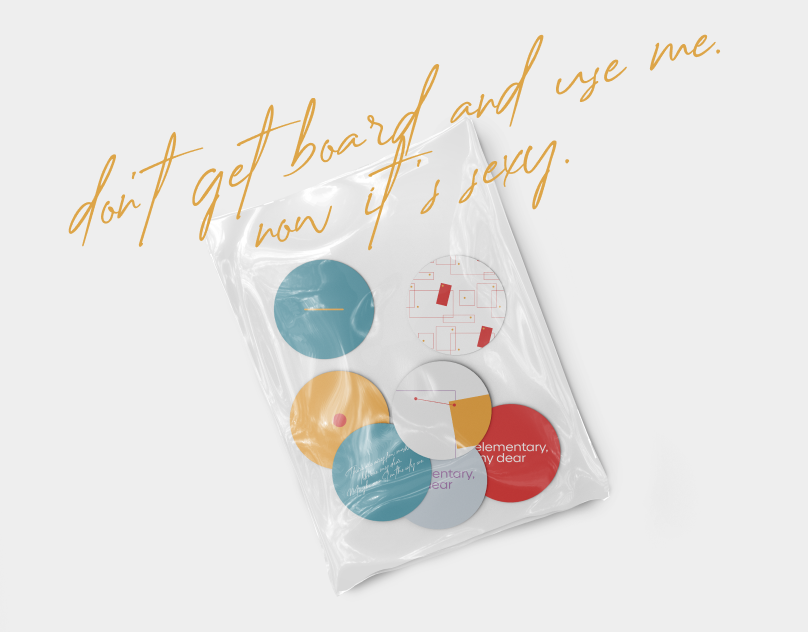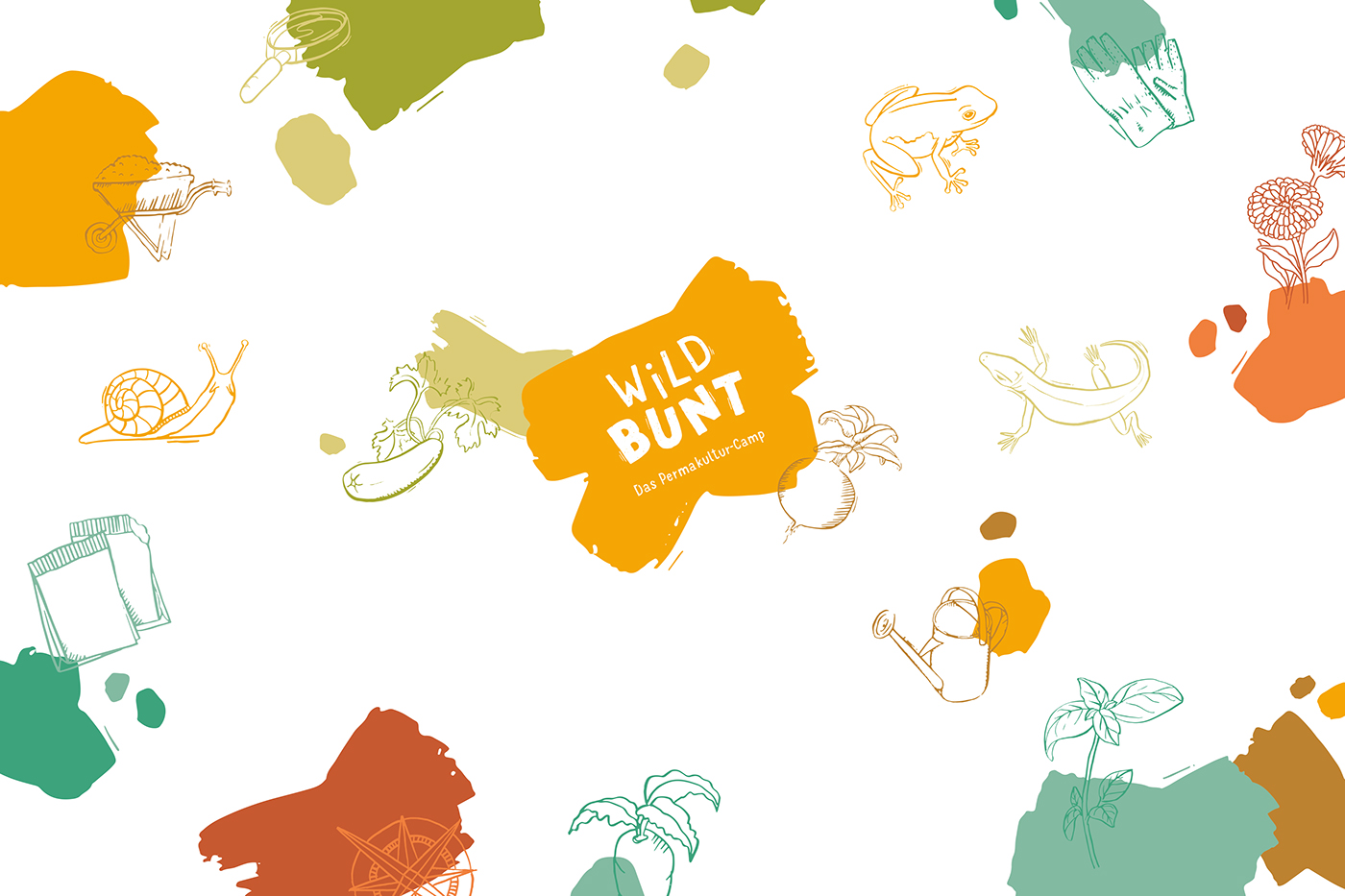
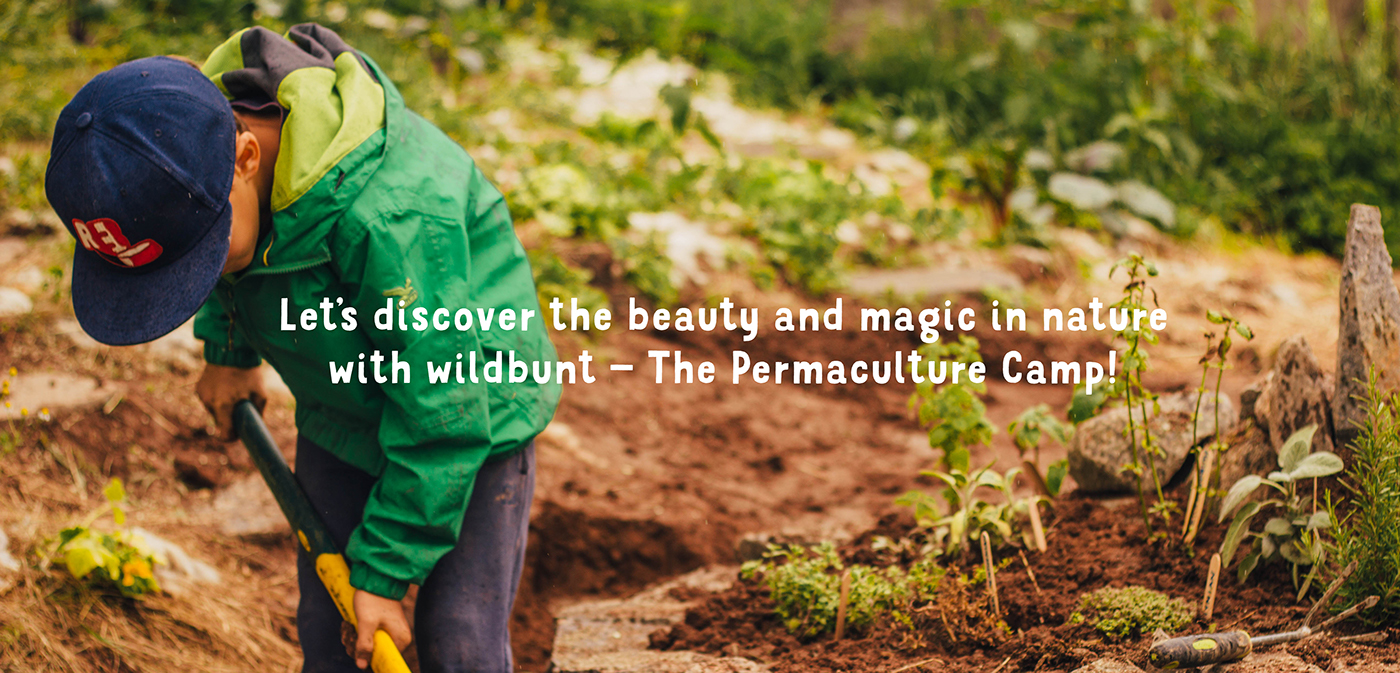
wildbunt is the project and the base of my M.A. thesis in Eco-Social Design, which I completed in November of 2017. Eco-Social Design can be understood as a participative, interdisciplinary and community-oriented process with the goal to create sustainable and holistic solutions. It is not only about changed aesthetics, but rather a rethinking of its nature.
The research question of the thesis was: How can Eco-Social Design contribute to creating interest and appreciation for nature and gardening through the principles and practices of permaculture in children?
Our time is shaped by continuous ecological, social, political and economic destabilization. Of immediate importance is the ecological crisis as deprives many living beings of their livelihood — animals, plants but also humans. The root of the problem can be recognized in the way of thinking and behaviour patterns of humans: human culture. This is where wildbunt comes in.
Through its holistic approach permaculture offers a potential solution to the environmental and cultural crisis of today. It can be understood as a philosophy of working with nature instead of against it. The first step is to observe and understand nature in its functioning. In a second step, the collected insights are integrated into the planning and design of human systems.









Between November 2016 and August 2017, I worked together with my colleague Lea Köder on the conception, planning and implementation of the project: Together we developed a holiday program for children on the subject of permaculture, for which we collaborated with the Educational Center Haus der Familie (HdF) on Ritten/ Renon in South Tyrol. A total of two five-day courses offered 10-15 children between the ages of 7 and 12 the opportunity to explore the garden at the education center. Between March and August, the garden was prepared at the Education Center.
On an organizational basis, the project can be divided into a total of 3 phases: search for partners and funding, preparation and development of outputs, and finally the implementation and reflection. The two course weeks act as prototypes, which are the object of scientific investigation. wildbunt can therefore be located in the area of "Research Through Design".
On the one hand, an extensive framework was developed to prepare the diverse contents relating to gardening and permaculture and divide them into content modules. Each module focuses on one topic, such as mulching, the earthworm or seeds. For this purpose, learning and working materials were developed, which equipped the children with basic knowledge about a topic. In a second step, these introductions were then practically expanded: actions and games made the lessons tangible. For example, hay and sheep's wool were laid out as a mulch in the garden, a worm compost made of recycled materials was built, and the children built seed packets out of recycled newspaper to save the seeds they had found in the garden.
The name "wildbunt - The Permaculture-Camp on Ritten/ Renon" is a project planned and implemented in German language. wildbunt is a neologism stemming from the words „wild“ and „bunt“ — wild and colorful. It describes a diverse, lively holiday program whose nature is reflected in the design. Writing and colors are playful and lively, complemented by hand-drawn illustrations.
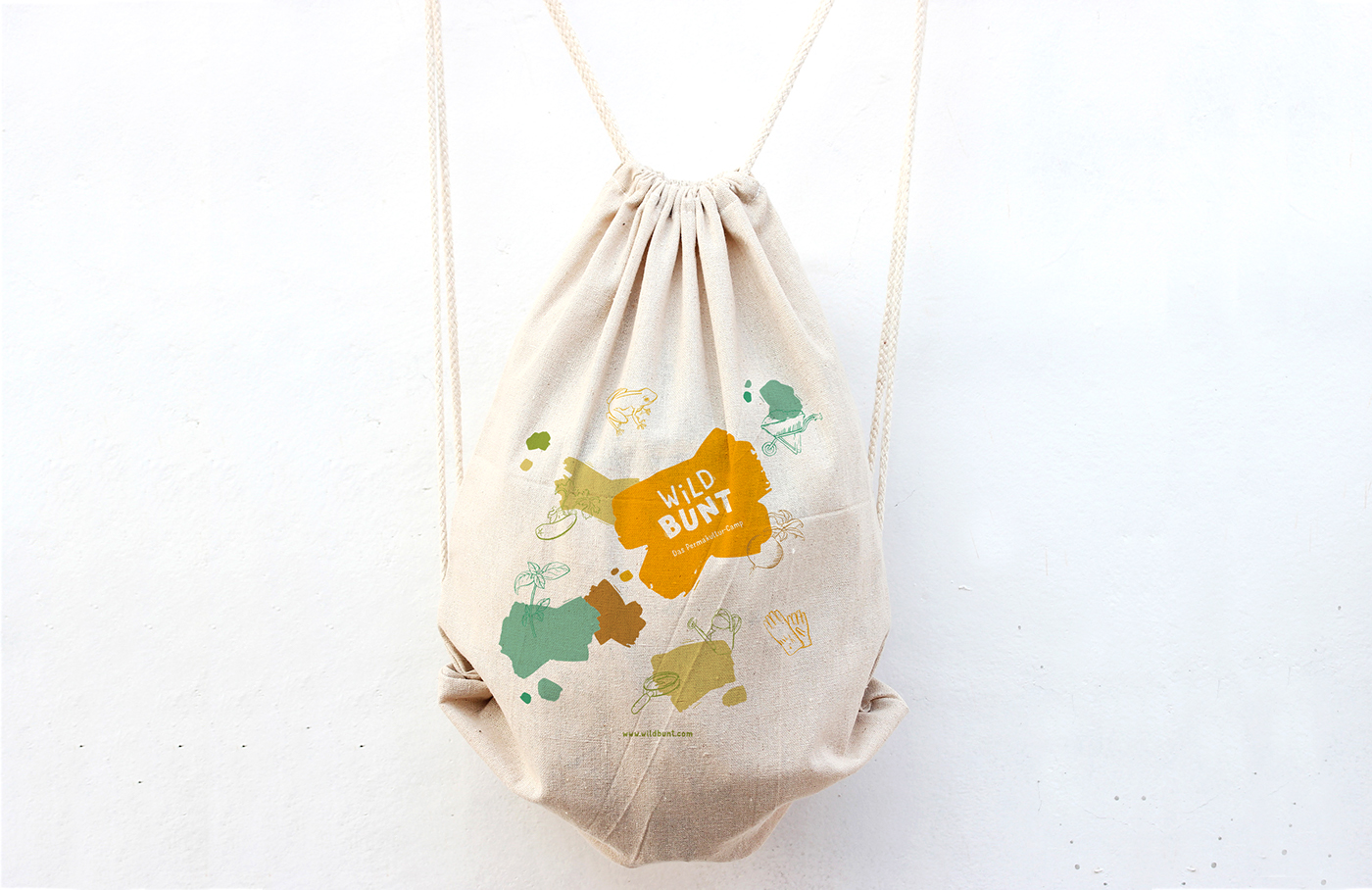



The toolkit, with which the children are equipped at the beginning of the course, consists of a backpack and various materials. The core of it is a card box with collectible cards, which explains to the children a variety of topics and makes them more accessible in a playful way.
Knowledge transfer was not a priority in the courses. Rather, the focus was on creating a new experiential framework for children in which they could move freely and autonomously and explore and discover in their own interests.
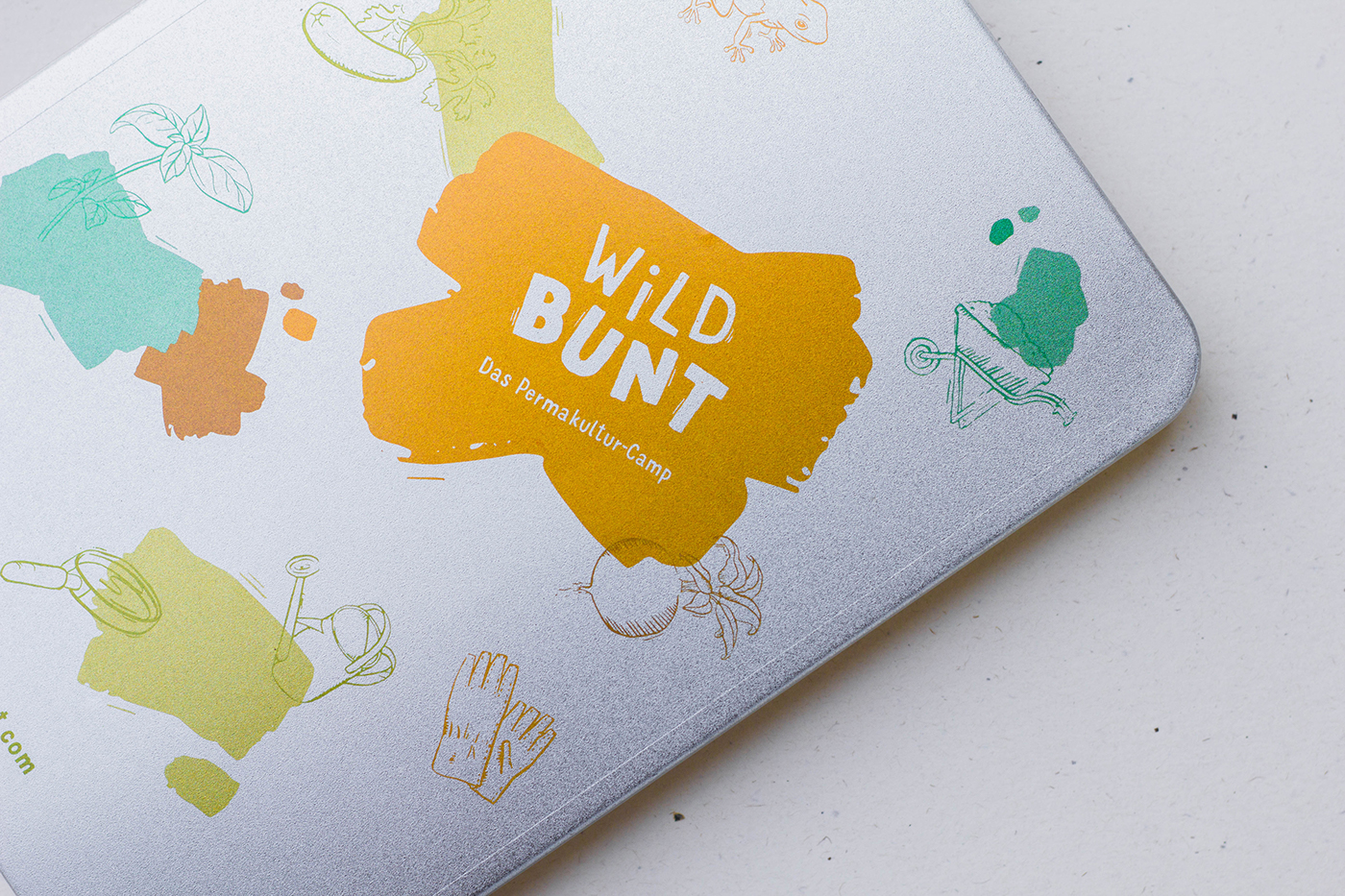





In addition, the children receive further materials such as a season calendar, a companion planting calendar or seed packets so that they can continue gardening also at home. The course framework and toolkit can be extended flexibly due to ist modular character.





Thanks to the elder bush in the garden it was possible to make elder sirup, the currants in the garden served as a base for fruit jam and seed bombs were built from soil, clay powder, water and seeds.



In order to create additional local reference, guests were invited to the courses. Teo Libera, for example, a regional organic apple farmer, supported us during the modules "Ecosystem Forest" and "The Earthworm and Worm Compost". Permaculture gardener Elisabeth Pircher from Wangen led the module "Seeds and Flowers" and Martino Vettori filled the herbal spiral he had built using dry masonry technology together with the children. The aim was to allow the kids a joyful and interesting learning experience together with various stakeholders from the area and to provide them with numerous resources and starting points to explore their own interests and strengths.





For the promotion of the project further media has been designed, such as business cards or flyers.


In a nutshell, it became clear to us that wildbunt has grown into a functioning and practically applicable concept that has created an educational offer for children in the area of permaculture. Self-determined learning in a natural environment and the giving of impulses supported the children when exploring their own interests and gave them a chance to interact with the community. In our eyes, the close contact with nature, the initiation of small projects and thus the assumption of tasks and responsibility in the garden contributed to a more considerate and conscious treatment of the children with nature and living beings.
In the future, we would like to implement wildbunt as a long-term project, preferably in close cooperation with a school or kindergarten. We would like to accompany a group of children over a longer period of time and improve and develop the project together with them.

